Linen fabric is gaining popularity, despite its past reputation. What makes it different? Find out with Fashion Bandung.
What does linen fabric consist of? How many types of linen fabric exist?
“What exactly is linen fabric?” is a question that a lot of consumers are curious about. Linen fabric is a type of cloth that is lightweight and has a porous texture. It is made from linen fibers, which are actually the leftover scraps from the process of reeling silk. These linen fibers are considered to be of low quality. Interestingly, around 60% of the waste generated during the silk reeling process consists of these linen fibers, leaving only 40% that can actually be used to weave silk. Despite its origins, linen fabric has gained popularity due to its unique properties and aesthetic appeal.
In order to prevent the wastage of raw material, individuals have found a practical use for that waste by transforming it into linen fabric. Consequently, one could perceive linen fabric and silk fabric as closely related or “brothers”, so to speak.
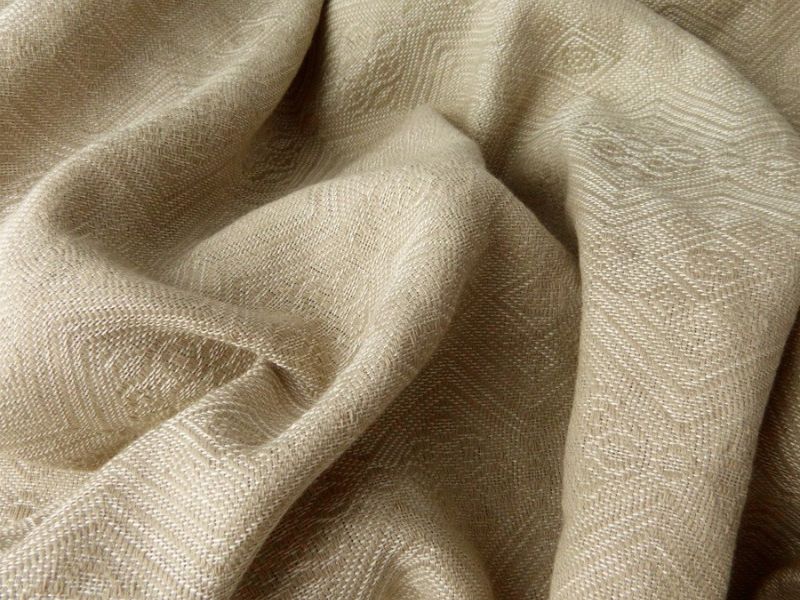
Linen fabric is a type of fabric made from the fibers of the flax plant. It is known for its durability, breathability, and natural texture. Linen fabric has been used for centuries for clothing, bedding, and home furnishings.
There are different types of linen fabric available, each with its own unique characteristics and uses. Some of the most common types include:
1. Plain Linen: This is the most basic type of linen fabric, with a plain weave pattern. It is lightweight, breathable, and has a smooth texture.
2. Belgian Linen: Also known as Belgian flax, this type of linen is known for its high quality. It is made from flax grown in Belgium and has a slightly heavier weight and a luxurious feel.
3. Irish Linen: This refers to linen fabric made in Ireland, known for its fine quality and craftsmanship. Irish linen is often used for high-end clothing and luxurious household linens.
4. Handkerchief Linen: This is an extremely lightweight and delicate type of linen fabric. It is often used for making handkerchiefs, scarves, and other fine accessories.
5. Towel Linen: As the name suggests, this type of linen fabric is specifically designed for making towels. It is highly absorbent, durable, and quick-drying.
6. Upholstery Linen: This is a heavier weight linen fabric, suitable for upholstery purposes. It is often used for furniture upholstery, curtains, and other home furnishings.
These are just a few examples of the different types of linen fabric available. Each type has its own qualities and uses, making linen a versatile and popular choice in various industries.
Aside from being called “linen”, this fabric is also commonly referred to as “flax” due to its composition of flax fibers. Linen fabric bears a resemblance to burlap with its coarse texture, but it possesses a softer and smoother feel. Dyeing this fabric with mac nua fruit results in garments that showcase a natural and rustic beauty, elevating the wearer’s overall appearance with an essence of refinement and luxury.
There are presently three commonly sought-after types of linen fabric available in the market:
- Raw linen fabric: Also known as Tussah silk, raw linen is woven from raw silk fibers. This is a very popular fabric in the fashion industry. This type of fabric still retains its characteristic roughness, combined with a light shine, and has the ability to keep warm quite well in winter. People often use raw linen to sew uniforms or Men’s shortsMen’s vest, men’s shirts,…
- Linen fabric: Loved by many consumers because the fabric is thin, soft, and extremely cool in the hot summer. This type of fabric is often used to sew shirts, scarves,…
- Embroidered linen fabric: Linen fabric has a very high aesthetic value, can be designed in many different styles of clothing. Embroidered linen fabric is often preferred by women because it creates a youthful, elegant, modern look,…
Apart from the three main types mentioned earlier, there are various other types of linen fabric available in the market. These include elastic linen fabric, cotton linen fabric, Thai linen fabric, and more. So, if you were wondering about the definition of linen fabric and what it encompasses, there are several different variants to consider.
2. Does linen wrinkle?
The question “What is linen fabric?” has been answered by Fashion Bandung in the information above. In addition to that, the question “What is linen?” has also been addressed. Many consumers are concerned about whether or not this fabric wrinkles.
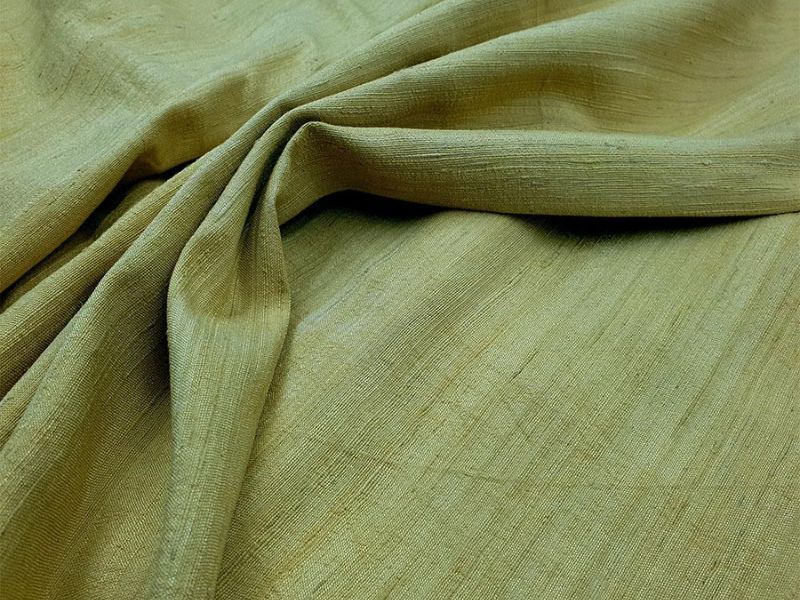
Is it a characteristic of linen to wrinkle easily?
One of the reasons why linen fabric requires careful handling is because it has a tendency to wrinkle easily. This means that when using and storing clothes made from linen, extra attention needs to be paid to avoid excessive wrinkling. However, this characteristic of linen can also be seen as advantageous, as it adds an interesting and natural wrinkling effect to the fabric.
Linen has a tendency to wrinkle easily, but its wrinkles can be easily removed. After washing, simply hang the clothes to dry, and the wrinkles will naturally disappear without requiring any time-consuming ironing. Even if you choose to use an iron, there is no need to worry about the clothes losing their original shape.
The process of making linen fabric.
To gain a deeper understanding of linen fabric, we can delve into the intricate process of its creation with Fashion Bandung. Linen fabric is a textile material that holds a significant place in the world of textiles and fashion. It is renowned for its exceptional qualities such as breathability, strength, and luxurious texture.
The creation of linen fabric starts with the flax plant, scientifically known as Linum usitatissimum. Flax plants are typically cultivated in temperate regions, primarily in Europe and North America. These plants are carefully harvested when they reach their peak growth, usually after flowering.
Once the flax plants are harvested, the process of retting begins. Retting involves exposing the flax stems to moisture, typically by submerging them in water for several days or by spreading them out on damp ground. This process allows the natural enzymes in the flax stems to break down the pectin that binds the fibers together.
After retting, the flax fibers are separated from the rest of the plant material. This process, known as scutching, involves beating the stems to remove the woody bits and straw. The goal is to retain the long, smooth fibers that will eventually be spun into linen yarn.
The next step is to comb the flax fibers to align them in the same direction and remove any remaining impurities. This process, called hackling or heckling, improves the quality and strength of the fibers. It results in long, straight fibers known as line flax.
Once the flax fibers are thoroughly prepared, they are ready for spinning. Spinning transforms the loose fibers into yarn by twisting them together. Traditionally, this was done using a spinning wheel, but modern methods utilize mechanical spinning machines for efficiency.
The linen yarn is then ready for weaving. In weaving, the yarns are interlaced vertically (warp) and horizontally (weft) to create a sturdy fabric structure. Advanced looms are used to ensure precision and consistency in the weaving process.
Finally, the woven linen fabric undergoes finishing treatments to enhance its properties. These treatments may include washing, bleaching, dyeing, or softening. The purpose is to achieve the desired color, texture, and durability for the end product.
In conclusion, linen fabric is a result of a meticulous and labor-intensive process that starts with cultivating flax plants and ends with the creation of a versatile and high-quality textile. Fashion Bandung is here to guide us through this fascinating journey, opening our eyes to the beauty and craftsmanship behind linen fabric.
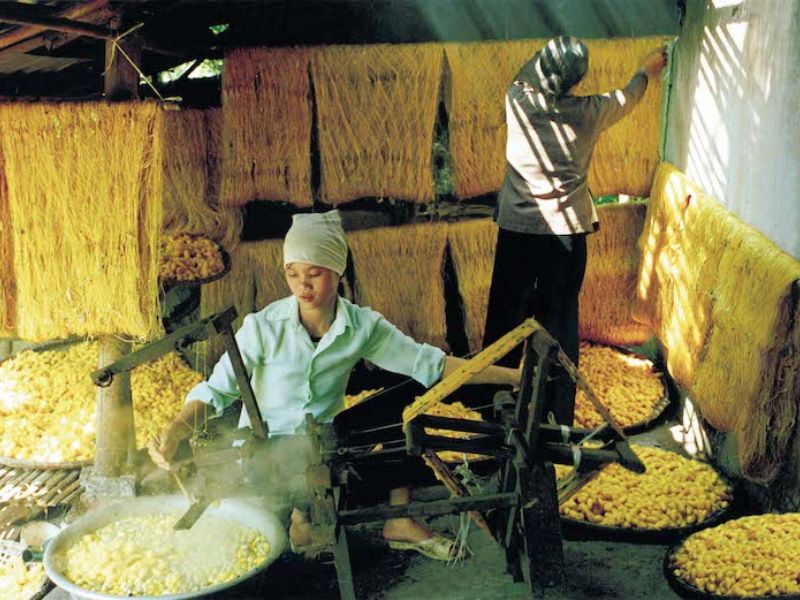
In this informative guide, we will explore the intricate process of creating linen fabric from start to finish. Discover the step-by-step journey that linen fibers undergo to transform into the luxurious and versatile material we know and love. From the cultivation of flax plants to the spinning, weaving, and finishing stages, gain a comprehensive understanding of the craftsmanship involved in making linen fabric. Dive deep into the world of this ancient textile and appreciate the labor-intensive techniques that contribute to its exceptional quality and beauty. Whether you are a textile enthusiast or simply curious about the creation of everyday items, this detailed exploration will provide you with valuable insights into the fascinating world of linen fabric production.
- Step 1: Cook the linen
Linen fabric is made from linen fibers, which are also known as raw silk. These fibers are obtained from silkworm cocoons, similar to the process of obtaining silk, but the fibers used for linen are larger. In order to transform these linen fibers into textile material for clothing, artisans must carefully cook the silkworm cocoons to soften them.
- Step 2: Pull into thread
Once the cocoons have been softened, skilled craftsmen carefully immerse them in a basin of water and start pulling the cocoon threads using their dexterous hands. This meticulous and manual thread-pulling process, commonly referred to as “pulling firewood,” holds tremendous significance in the overall production of linen fabric.
After the process of spinning linen fibers into yarn is completed, the resulting yarn is then carefully reeled and left to dry under the sun. It is crucial for the linen fibers to be thoroughly dried to prevent the growth of mold. Once the drying process is finished, the linen fibers are collected and prepared for the weaving process.
- Step 4: Weaving linen fabric
In order to create linen fabric, the skilled craftsman utilizes a specialized weaving tool known as a loom. This intricate process involves interlacing the threads of the fabric to produce a versatile material commonly employed in the production of clothing, bed sheets, scarves, and various other items.
Benefits of linen fabric include its breathability, durability, natural cooling properties, and ability to resist bacteria and allergens.
To provide a thorough explanation of the question “What is linen?” and understand why it is widely favored, let’s delve into the remarkable advantages of this fabric by examining the insights provided by Fashion Bandung.
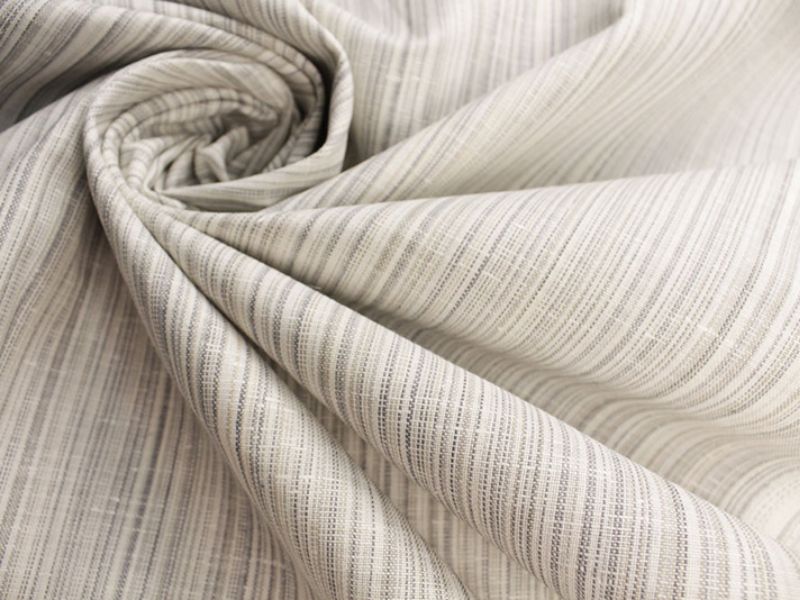
Linen fabric is known for its exceptional benefits and unique qualities that set it apart from other fabrics. With its versatile and practical nature, linen offers numerous advantages that make it a popular choice among consumers.
One of the outstanding advantages of linen fabric is its remarkable breathability. Linen is highly breathable, allowing air to circulate freely through its fibers. This natural ventilation helps to regulate body temperature, making linen an excellent choice for warm climates or during hot summer months. It provides a cooling effect on the skin, keeping the body feeling refreshed and comfortable.
Another remarkable feature of linen fabric is its incredible durability. Linen is known for its strength and robustness, making it resistant to wear and tear. It can withstand heavy usage and repeated washing without losing its integrity. Linen fabric also has excellent resistance to fading and pilling, ensuring that it maintains its appearance and quality even after prolonged use.
Additionally, linen fabric possesses excellent moisture-wicking properties. It has the ability to absorb moisture quickly, keeping the body dry and preventing it from clinging to the fabric. This moisture-wicking capability makes linen an ideal choice for towels, sheets, and clothing items that are in direct contact with the skin.
Furthermore, linen fabric is renowned for its hypoallergenic and anti-bacterial qualities. It is naturally resistant to bacteria, mold, and mildew, making it a safe and hygienic option for individuals with allergies or sensitivities. The hypoallergenic properties of linen make it suitable for bedding, clothing, and other textile products that come into close contact with the skin.
Moreover, linen fabric is highly eco-friendly and sustainable. It is made from the flax plant, which requires minimal water and pesticide usage compared to other crops. Linen production also produces minimal waste and can be easily recycled. This makes linen a perfect choice for those who prioritize environmentally-friendly products and sustainable fashion.
In conclusion, linen fabric offers outstanding advantages that make it a preferred choice for many. Its breathability, durability, moisture-wicking capabilities, hypoallergenic qualities, and eco-friendly nature contribute to its popularity. Whether used in apparel, home textiles, or other applications, linen fabric stands out for its exceptional qualities and benefits.
- Soft, airy fabric: Linen fabric makes the first impression on consumers as soft, cool, and light. Because the fabric structure is quite special with many gaps, air will circulate easily, limiting the uncomfortable, stuffy feeling for the wearer. The weight of this fabric is also quite light, creating a comfortable feeling for the user.
- Non-static fabric: This is a big plus of linen fabric and thanks to it, users will not have to worry about the fabric sticking to their body like with raw fabrics, canvas, etc.
- Health safety: Because linen fabric is made from natural ingredients, it is safe for the skin, does not cause irritation, and is very suitable for people with sensitive skin.
- Environmental friendliness: This is an advantage of linen that cannot be forgotten. From the manual production stage to the finished product stage, they do not harm the natural environment. That is also the reason why linen is becoming an “idol” in the “green fashion” trend.
- Unique wrinkle effect: For many fabrics, shrinkage is considered a huge minus point. But with linen, it is the complete opposite, it is considered an interesting feature, helping consumers to easily identify among countless similar fabrics on the market. After dry cleaning, the wrinkles on the fabric will shrink smaller, more evenly, thereby giving the wearer a new, different look.
Uses of linen fabric in everyday life.
Linen fabric is highly favored in the fashion manufacturing industry, particularly for summer attire, due to its numerous advantages. It possesses qualities such as being cool to the touch, lightweight, luxurious, and youthful. This makes it an ideal choice for crafting garments like ao dai, shorts, men’s pants, and T-shirts. The fashion industry recognizes the exceptional properties of linen, making it a popular choice for creating stylish and comfortable clothing options during the summer season.
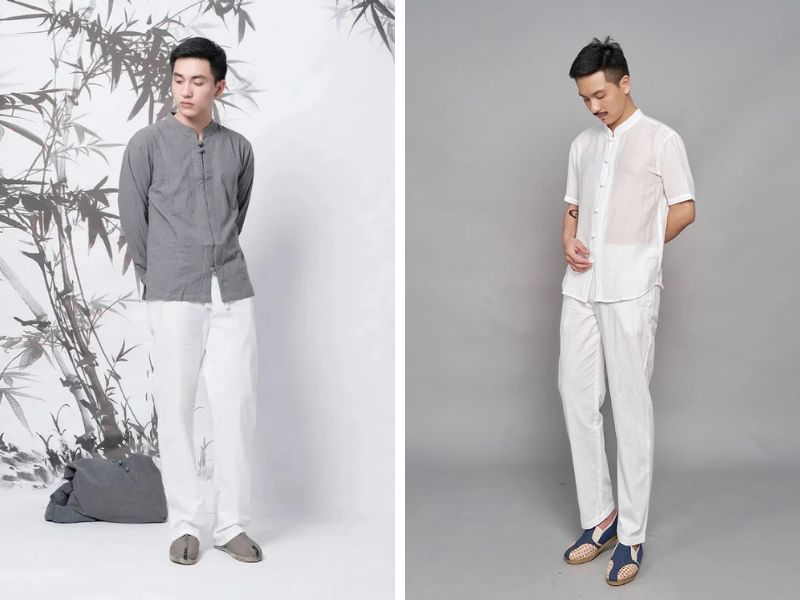
Linen fabric, known for its versatility and durability, finds numerous applications in our daily lives. This natural textile is widely utilized for various purposes due to its exceptional qualities.
In the realm of clothing, linen fabric is a popular choice for warm-weather garments. Its breathability and ability to absorb moisture make it ideal for summer clothing, including shirts, dresses, shorts, and skirts. Linen’s natural cooling properties and resistance to static and wrinkles contribute to its suitability for everyday wear.
Moreover, linen fabric extends beyond clothing, finding utility in household items. Linen bed sheets are highly coveted as they possess hypoallergenic properties and provide a cool and comfortable sleep experience. Towels made from linen are renowned for their high absorbency and quick drying capabilities.
Linen is also widely used for various decorative purposes. It is commonly employed for upholstery, offering both style and resilience. Linen curtains provide a sophisticated and breezy look to interior spaces. Furthermore, linen tablecloths and napkins are prized for their elegance and ability to add a touch of refinement to dining experiences.
In addition to its aesthetic and functional qualities, linen fabric is also environmentally friendly. Linen is derived from the flax plant, which requires minimal water and pesticides to grow. The entire plant can be utilized, making it a sustainable choice.
The versatility and multitude of applications of linen fabric make it an essential part of our daily lives. From clothing to household items and decorative accents, linen offers both practicality and style, making it a favored material in various aspects of our everyday routine.
This fabric is highly versatile and can be used to create sophisticated and professional office attire. Additionally, when linen fabric is combined with other materials like cotton, it produces stunning bedding sets that promote relaxation and a restful sleep for users after a busy day of activities, studying, or working.
How can you identify and select linen fabric?
If you are not familiar with linen fabric, it can be difficult to distinguish it from other types of fabrics when shopping. To avoid buying the wrong product, Fashion Bandung offers a highly reliable method to identify linen fabric. By following this standard guideline, you can easily recognize linen fabric and make informed purchasing decisions.
- With linen fabric, when you stroke the surface you will feel a moderate roughness, the roughness can also be recognized through each fingertip.
- When the fabric is crumpled it will form creases that are difficult to flatten unless dry cleaned or ironed.
- If you pull the fabric hard in all four directions, quality linen will not stretch.
- You can use a lighter to burn one end of the fabric. If it is real linen, it will catch fire easily, giving off white smoke, and when burned, there will be soot. As for fake linen, when burned, it will melt plastic and give off black smoke.
Selecting a beautiful, high-quality linen fabric can be a relatively simple task, even if you have limited expertise or knowledge about this specific type of material. Many individuals have successfully employed the following method to choose linen fabric, which you can also refer to:
1. Know your purpose: Determine the intended use of the linen fabric. Are you looking to create garments, home decor items, or accessories? Understanding the purpose will help you select the appropriate weight, texture, and color of the fabric.
2. Research reputable sources: Look for reputable linen fabric suppliers or stores that specialize in textiles. Check customer reviews, ratings, and recommendations to ensure you are purchasing from a reliable source.
3. Consider the thread count: Linen fabrics with a higher thread count tend to be of better quality, as they are more durable and have a softer feel. Aim for a thread count of at least 80 to ensure a satisfactory fabric.
4. Examine the texture: Run your fingers along the fabric and assess its texture. Quality linen fabric should feel smooth, with a slight crispness, and have a subtle sheen. Avoid fabrics that feel rough, overly stiff, or have a dull appearance.
5. Inspect the weave: Evaluate the weave of the fabric by holding it up to the light. A tightly woven linen fabric is preferable, as it indicates durability and resistance to fraying. Avoid fabrics with loose or uneven weaves, as they may not withstand regular use.
6. Consider the weight: Determine the thickness and weight of the fabric based on your needs. Lighter weight linen is suitable for summer apparel, while heavier weights are more appropriate for upholstery or winter garments.
7. Check the colorfastness: If you have a specific color in mind, make sure to check the fabric’s colorfastness. This ensures that the color will not fade or bleed when washed or exposed to sunlight.
8. Consult with experts: If you are uncertain about any aspect of linen fabric selection, seek advice from knowledgeable individuals, such as fabric store personnel or experienced crafters. They can provide valuable insights and guidance based on their expertise.
By following these guidelines, you can confidently choose a beautiful and high-quality linen fabric, even if you are relatively new to working with this material.
- Hold the fabric up to the light. If you see the threads woven together, you should choose a fabric with even threads and tightly woven together.
- You can gently rub the fabric to check for wrinkles. If the fabric wrinkles a lot, it is not made of nylon, which often makes the wearer feel stuffy and hot.
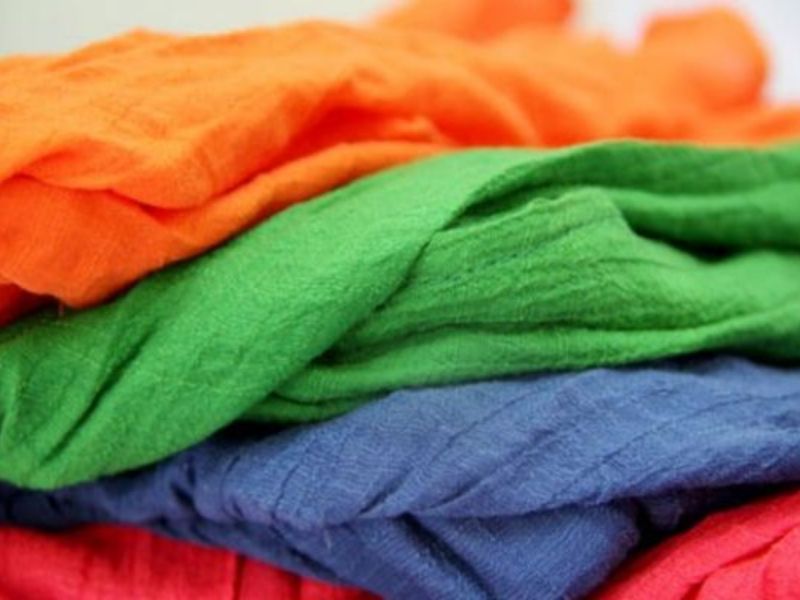
Identifying and selecting linen fabric: A comprehensive guide
To maintain linen fabric, follow these instructions for proper preservation and cleaning.
Since linen fabric is derived from natural materials, it requires special care during washing and storage to prolong its lifespan. Consumers should pay close attention to the following guidelines in order to maintain the quality of their linen garments:
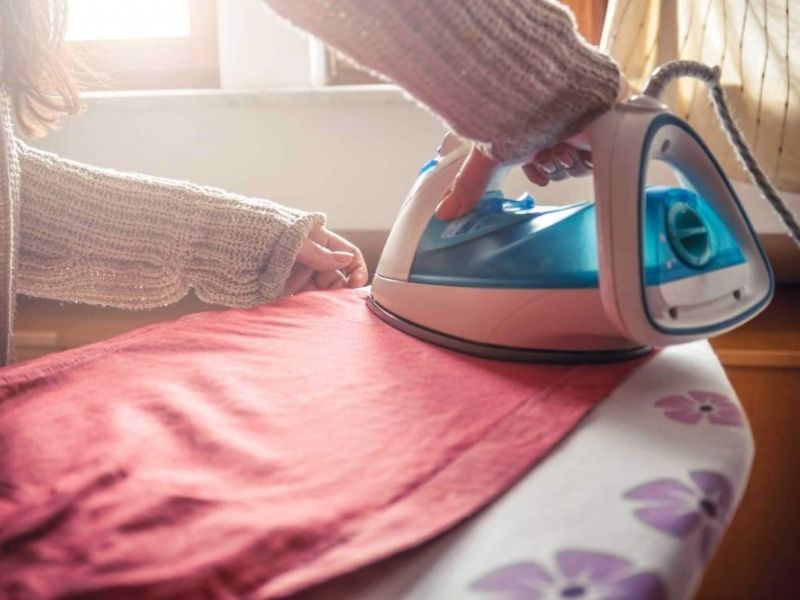
The following are detailed instructions on how to effectively preserve and clean linen fabric:
1. Storage: When not in use, linen fabric should be stored in a cool and dry area, away from direct sunlight and moisture. This helps prevent damage and discoloration over time. It is advisable to store linen in a breathable container, such as a cotton bag, to allow air circulation and to avoid any musty odors.
2. Pre-washing: Before using linen for the first time, it is recommended to pre-wash it. This will soften the fabric and remove any sizing or impurities. Machine wash the linen in cold or lukewarm water on a gentle cycle, using a mild detergent. Avoid using bleach or harsh chemicals as they can weaken the fibers. Once washed, tumble dry on a low heat setting or air dry outdoors.
3. Regular washing: Linen fabric can be machine washed or hand washed as needed. Sort linen items by color and wash them separately or with similar colors to prevent potential color bleeding. It is best to use a mild detergent that is suitable for delicate fabrics. Choose a gentle cycle and cold or lukewarm water to protect the fibers. Avoid overloading the washing machine to allow enough space for the linen to move freely.
4. Stain removal: If stains occur, it is important to address them promptly. The type of stain will determine the appropriate treatment method. For food or beverage stains, gently blot the area with a clean cloth or sponge to remove any excess. Then, apply a stain remover or a mixture of mild detergent and water to the stain and gently scrub with a soft brush or cloth. Rinse thoroughly and repeat if necessary.
5. Drying: After washing, remove the linen from the washing machine promptly to minimize wrinkles. If air drying, gently shake out the fabric to reduce creases and hang it on a clothesline or drying rack. Avoid direct sunlight, as prolonged exposure can cause colors to fade. If using a dryer, select a low heat setting and remove the linen while it is still slightly damp to prevent over-drying and excessive wrinkling.
6. Ironing: To achieve a smooth, crisp finish, linen fabric should be ironed while slightly damp or using a steam setting. Set the iron to the appropriate heat level for linen and ensure there is no residual water in the iron to prevent water stains. Iron the fabric in gentle, straight strokes, avoiding excessive pressure. If desired, use a pressing cloth or iron the fabric on the reverse side to protect delicate embellishments or embroidery.
7. Storing freshly cleaned linen: Once linen fabric has been cleaned and ironed, it can be stored in a folded or hanging position. To prevent excessive wrinkling, fold the linen neatly and place it in a drawer or on a shelf. Avoid hanging linen for long periods of time as it can stretch or lose its shape.
By following these detailed instructions, you can effectively preserve and clean your linen fabric to maintain its quality and prolong its lifespan.
- Use cold water when washing, do not soak linen in hot water or strong detergents.
- Should hand wash, limit machine washing to avoid quick damage and wrinkles of the fabric.
- If using a washing machine, you should put linen or linen clothes in a special mesh bag before putting them in the machine to avoid damaging the fabric.
- Do not iron linen at too high a temperature and soak it before ironing to avoid damaging the fabric.
-
When drying linen clothes, you should choose a place with moderate sunlight or cool air. Do not dry in hot weather above 40 degrees Celsius.
Avoid wearing linen clothes when participating in sports activities because the fabric is not elastic and quite thin.
After reviewing the information provided in the article above, Fashion Bandung has successfully addressed the following questions: What is linen? and Does linen wrinkle? In addition to these queries, the article also imparts valuable knowledge about the process of fabric making, the benefits of linen fabric, and how to identify and select linen fabric. This insightful sharing aims to equip readers with more useful information about the garment industry.
Fashion Bandung is a clothing brand specifically designed for men. It offers a wide range of fashionable clothing options that cater to different styles and preferences. From casual wear to formal attire, Fashion Bandung provides trendy and stylish options for men of all ages. With a focus on high-quality materials and attention to detail, Fashion Bandung ensures that customers can not only look good but also feel confident and comfortable in their outfits. Whether it’s for a special occasion or everyday wear, Fashion Bandung strives to provide men with the latest fashion trends and timeless classics.

